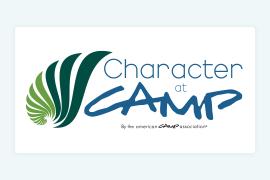During the summer of 2023, myself and my coworkers at The Redwoods Group visited around 150 camps and summer programs. And there was one common theme that we kept hearing time-and-time-again: The number of staff it takes to support a group of campers is now higher than it once was.
The reasons for this new reality are complex and multifaceted. Yet most of the camps we spoke to and visited identified the pandemic and its aftermath as a driving factor.
To put it simply, campers are exhibiting higher needs in terms of mental health, behavioral support, and self-regulation. And because they missed out on several years of socialization at school and camp, they are also lacking some of the interpersonal skills and ability to follow rules that we might once have taken for granted. The end result is often an increase in incidents of aggression, "acting out," or higher levels of frustration among everyone.
Staff and volunteers also have their own mental, emotional, and social health to take care of. And many of the camps we speak to are reporting staff are much more vocal about their needs than they may once have been. Many are requesting greater time off, and camps are doing their best to accommodate these requests.
A Challenge to Camp Budgets
Of course, outlining a need for additional camp staff, or a higher staff to camper ratio, is one thing. Finding the money to pay for these changes is quite another. To give an example, some camps that used to run on a ratio as high as 1:10 — meaning one staff member and 10 campers in a cabin for example — are now finding they need to switch to something closer to two staff for every eight campers. Put simply, assuming wages and camper fees stay the same, that’s a doubling of payroll, combined with a 20-percent reduction in revenue. And increasing payroll while decreasing revenue is not typically thought of as a winning business strategy.
That’s why, when camp leaders are talking to their boards or stakeholders about financing such changes, it’s important to focus the conversation on the broader mission and values of camp — and specifically the safety and well-being of both campers and staff. Happily, this "big picture view" is not without its benefits: Camps that have adjusted their ratios are reporting benefits in terms of both camper experience and staff retention.
But how do we quantify those benefits?
Avoiding Camper Exclusions
Camp Susan Curtis in Maine provides free summer camp opportunities to children facing economic hardship. Faced with an astronomical rise in behavioral issues this year, the camp ended up sending home 43 campers—more than four times the number of campers they would normally exclude. This led Camp Director Terri Mulks to track the nature of those exclusions very closely:
“The population we serve has some challenging behaviors. We talk about that openly. But this year something changed. The number of incidents we were seeing was simply beyond our scope of service. I ended up tracking a number of factors around who we were sending home, because I did not want that to happen again. It’s not good for the campers going home. It’s not good for the community at camp. And it’s not good for staff, or our mission either.”
Terri tracked cabin size, camper age, and also whether campers were new or returning. As a result of that tracking, she found that a full 43 percent were rising fourth graders. The majority were new to camp. And almost all of them were in larger cabins with 10 or more campers. Terri explains that these results have led to substantive discussions around what can be done:
“It’s clear that some kids are just not ready for camp. So we’re looking at raising our age of eligibility to rising fifth graders. And we’re firmly committed to maintaining a 1:4 staff to camper ratio for all cabins. We’re also spending a lot of time preparing staff for what it means to work with campers who are not yet at their typical developmental level. That’s both in terms of meeting the needs of that camper, and also looking after themselves as staff, so that they are able to continue to serve.”
A New Model for a New Normal
The camp community has always prided itself on its adaptability, and this was clearly evident in the camps we visited. Alongside finding new ways to fund such staffing changes, camps are also rethinking the structure of their staffing. Some camps, for example, have created new dedicated positions, like ‘wellness directors’ or ‘camper specialists.’ Others are hiring more ‘floater’ staff. In both cases, the goal is to create a more flexible team, with staff members that are ready, able and trained to step in when behavioral or emotional issues arise—addressing the needs of a camper in distress, taking pressure off counselors, and not diluting the staff to camper ratios for the rest of the group.
These implications for budget are not trivial. As Terri Mulks notes, they will likely impact different types of camps in different ways — but everyone will have to plan for it:
“I have the privilege of not relying on camper tuition fees for revenue, but I still have to go to my supporters and donors and explain why we are actively choosing to serve fewer campers. That’s not necessarily an easy pitch, but it is the right thing to do. For camps that rely on tuition fees to balance their budget, they take a more immediate and direct hit — and many nonprofit camps may not have much of a reserve to fall back on to cover it.”
Yet while there are significant budgetary implications to increasing staff numbers, or decreasing camper days, it is important to also look at the longer-term vision for camp. As Redwoods’ CEO Paige Bagwell points out, there are budgetary implications to maintaining the status quo too:
“Whether you’re running a nonprofit or a business, balancing the budget is one of the first responsibilities of a leader. But there is a danger in focusing too narrowly on immediate financial implications. Yes, adding staff, or limiting the number of campers, has budget implications. But then the same is true of reputational risk from poor camper experience, or rising insurance costs from an increase in incidents. The challenges that camps are currently facing will impact their bottom line one way or another.”
Paige argues that by proactively addressing those challenges now, camps can get out ahead of the curve and develop a model for the realities they are facing today.
About the Author

Katie Johnson is a senior consultant with The Redwoods Group—a mission-focused insurer of camps and other youth-serving organizations. Prior to joining Redwoods, she worked for 20 years in the camps industry — both as a camp director, and later with ACA.
Photo credit: picture/iStock via Getty Images.
Periodically, the American Camp Association (ACA) makes timely and relevant information about products and services available to its members so they can make informed decisions for their camps. However, the ACA does not endorse products, services, or companies.




